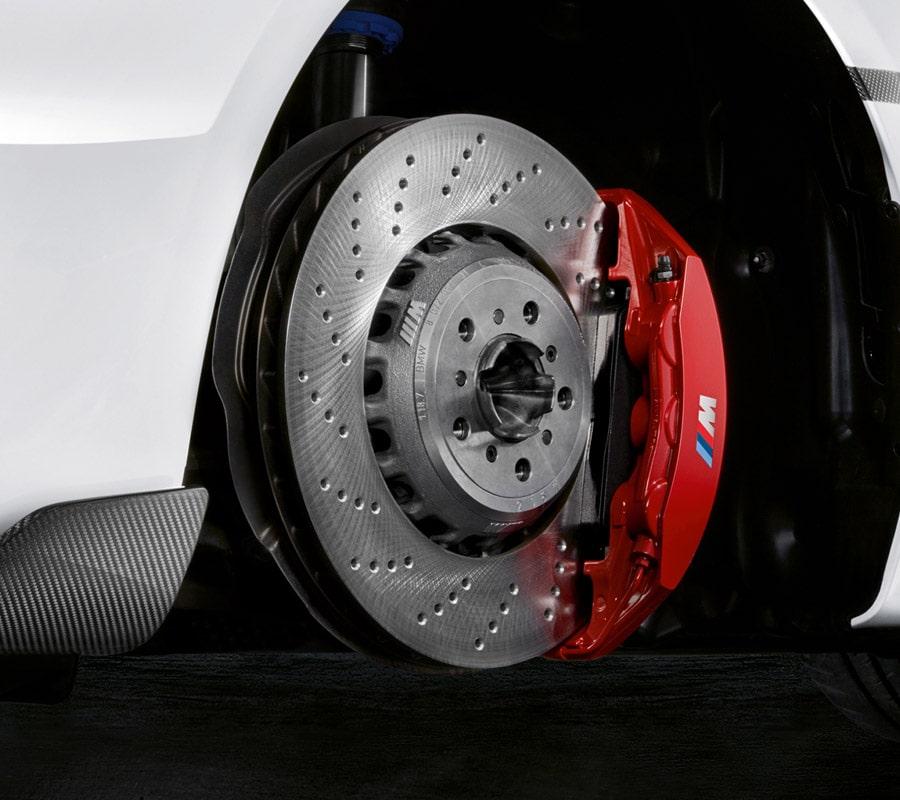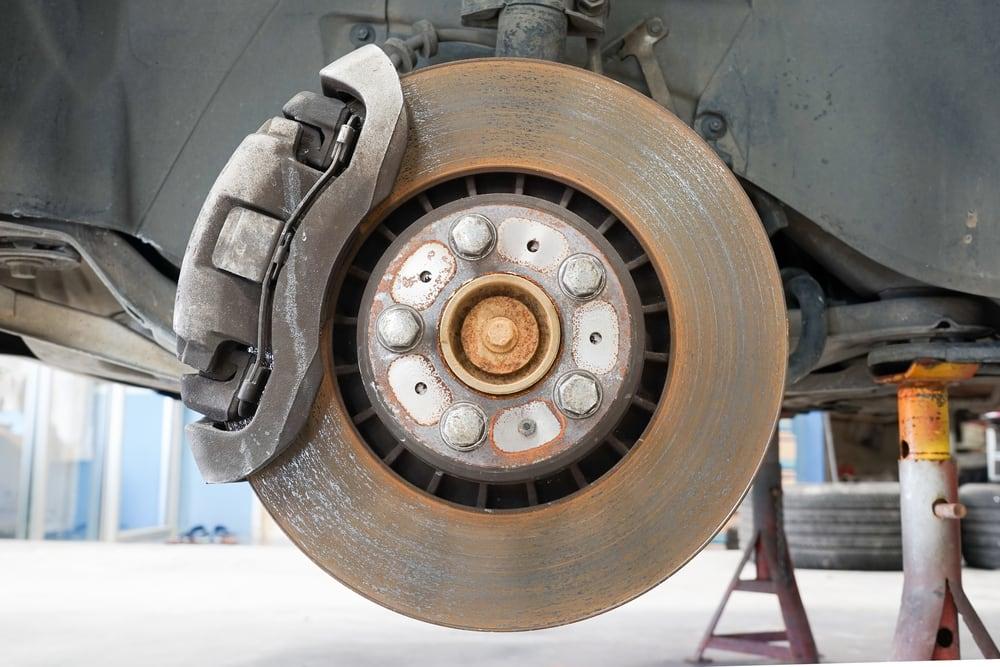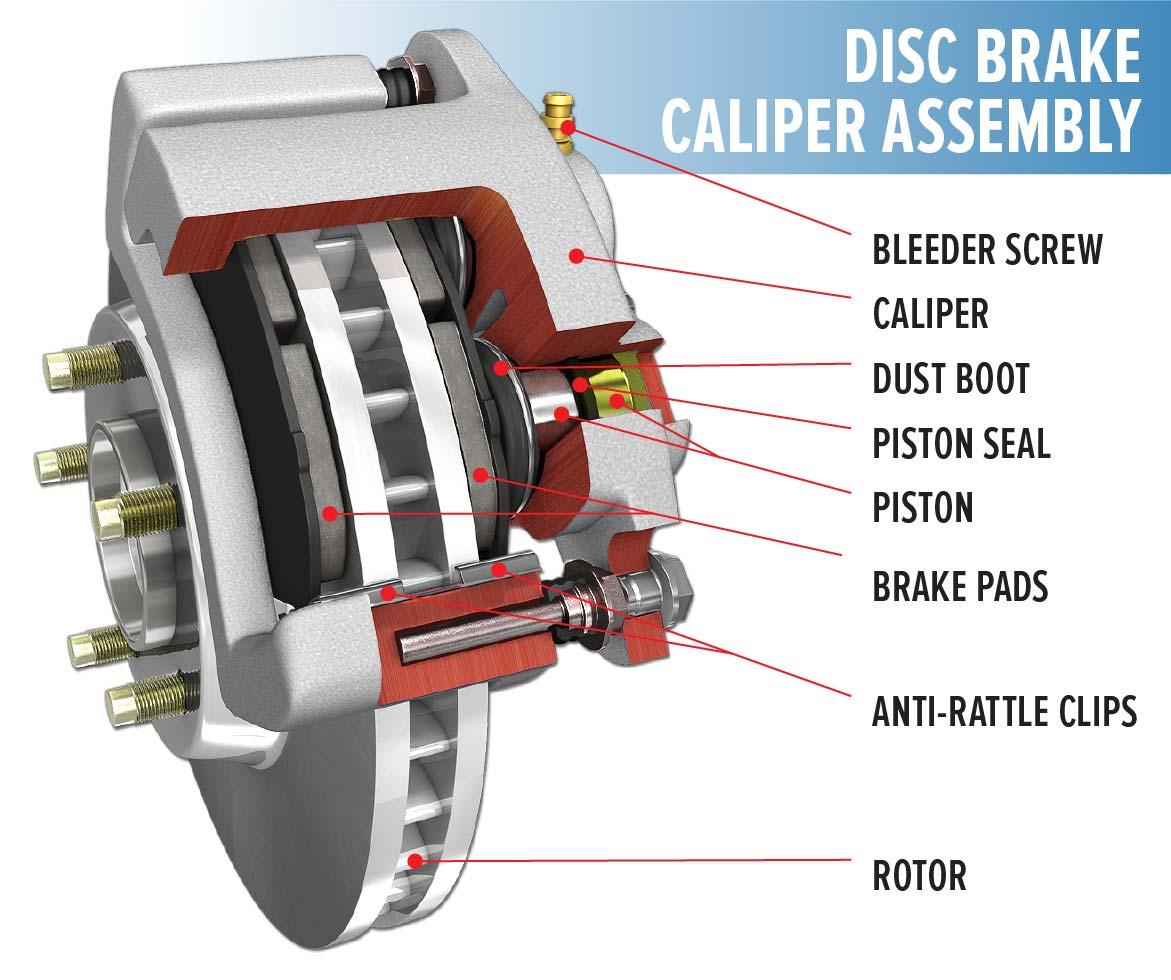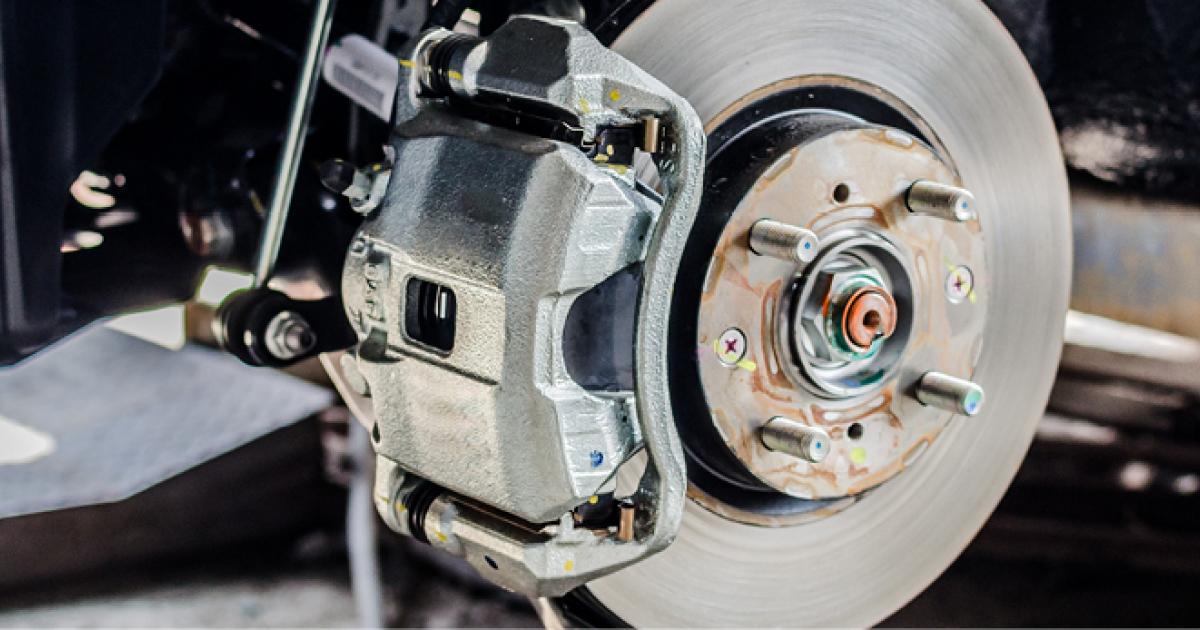The more you use a component in your car, the more wear and tear. That said, the parts that work to bring you to a safe stop every time you press on the brake pedal, which all of us do a lot, will need frequent check up and replacement. Learning how to change brake calipers is a maintenance tips you must master to make sure your brake is always in top condition.
Contents
What are brake calipers?
Understanding how a car’s braking system works will help you grasp why, when and how you need to replace brake parts.
The braking system of a car consists of brake rotors, brake calipers and brake pads.
Brake rotors are metal disc made from steel and iron. They connect to the axles, the component that turns the wheels. The brake calipers are clam-like parts that come into contact with both sides of the brake rotors to create friction when you brake.
When you press the brake pedal, the brake calipers clamp on both sides of the brake rotors to slow down the wheels to a stop.

To increase braking efficiency and minimize wear and tear on the expensive braking system, brake calipers are equipped with pads. These sacrificial pads squeeze on both sides of each brake rotor to slow it down.
READ MORE
- What Are Brake Rotors Made Of?
- Things To Consider Before Buying Used Brake Rotors
- Do I Need To Replace Rotors With Pads?
Why do they need to be replaced?
Naturally, over time, calipers are subject to wear and tear. They can rust or get locked in place, making a squealing sound when you press your brakes or worse, your brakes can freeze up, which is undoubtedly fatal.
READ MORE
Ensuring your brakes function well every time you use them is vital to safe driving, thus if you encounter anything strange related to braking, make sure to check to braking system and if needed, replace your brake calipers.
If your car has Anti-lock Braking System (ABS)
What is an anti-lock braking system?
This automated safety system keeps a car’s wheels rotating during abrupt braking, thus avoiding uncontrollable wheel skidding, which will result in the driver losing control of the car.
If your car has ABS, it’s better to have your mechanics perform brake calipers replacement, as it requires special equipment as well as extra precautions to avoid air leaking into the braking system.
How to change brake calipers – Removing old calipers
1. Take off the wheel
Securely jack up your car and crank the jack until the wheel you need to remove is off the ground. Place jack stands under your car so it will be secured in place.
Take off the wheel to reveal the brake calipers you need to change. First, loosen the lug nuts that are holding the wheel in place. If it’s hard to loosen the lug nuts, spray them with some lubricant first. Then, firmly grab the tire with both hands, pull it straight off the bolts holding it in place.

2. Pry the caliper off
Once you remove the tire, you will see the brake rotor, which is a flat round metal disc behind the wheel. The caliper is the piece of metal that clamps on both sides of the rotor disc. Loosen the 2 bolts on the back of the caliper.
First, try to pry the caliper off of the brake rotors using a flathead screwdriver. Then, still using the screwdriver, pry the caliper off of the brake pads. There are 2 brake pads attached to each caliper.
Be careful not to scratch or damage the brake pads.
The caliper will still be attached to a hose. Leave it there to avoid leaking brake fluid. Brake fluid is a type of hydraulic fluid used in the braking system to amplify braking force and convert this braking force into pressure.

3. Remove & check brake pads
Each caliper houses two rectangular-shaped flat brake pads usually held in place by clips or pins. Pull them straight out from the caliper bracket and check the thickness of each brake pad. The rule of thumb is if they are less than 0.25 inch or 0.65 cm thick, you should replace them to ensure safe braking when you drive.
4. Remove caliper bracket
Loosen the two bolts on the back side of the caliper bracket. After loosening the first bolt, hold the caliper bracket in place with your hand to avoid it slipping. After removing both bolts, carefully remove the caliper bracket off of the brake rotor.

Note: When you’re removing the old caliper, pay attention to where and how every component is positioned and secure. This will save you a lot of trouble when trying to put the new caliper in place.
How to change brake calipers – Installing new calipers
1. Get the correct caliper
The new caliper that you buy must be compatible with the rest of the old calipers that are not replaced. That is you must look for a caliper that matches your car’s specific model, make and year of manufacture.
If the new caliper is not an exact match with the remaining calipers, you will have to have the other calipers replaced as well.
Make sure to grab a caliper that includes a bracket to avoid mismatching.
2. Remove the old caliper from the hose
Remember that we left the old caliper still attached to a hose, which leads to the brake’s main cylinder. Now remove the old caliper from the hose by loosening the banjo bolt on the caliper that attaches to the hose.
It is important to note that you should only try to remove this banjo bolt once you’ve had the new caliper ready for replacement immediately. Otherwise, this may result in leaking brake fluid.
3. Reattach brake hose to new caliper
Reattach the brake hose onto the new caliper’s intake port. Tighten the banjo bolt with a ratchet. If there’s any leaking brake fluid from either the bolt or the hose, make sure to wipe it clean to avoid possible corrosion.
4. Secure caliper bracket against brake rotor
Place the new caliper bracket against the brake rotor in the same position as the old one. Feed the bolt through the holes on the caliper bracket and tighten them with a ratchet.

Then, slide the new brake pads into the two slots on the front and back of the caliper bracket. Make sure the padded side of the pads is the side in contact with the brake rotor.
5. Secure the new caliper to the caliper bracket
Position the caliper so that it fits around the brake pads. Then tighten the caliper mounting bolts with a ratchet to make sure it stays firmly in place to avoid the brake caliper coming loose while you drive.
How to change brake calipers – Bleeding the brake system
An important step in learning how to change brake calipers if know how to bleed the brake system after you’ve installed the new calipers.
Whenever you work on any of the braking system’s component that carry brake fluids, air will enter the system and will affect the braking system’s function. Thus after changing the brake calipers, you must bleed the braking system to get rid of this air.
For a comprehensive, easy to understand guide on brake bleeding, refer to this article How to bleed brakes for cars: A step-by-step procedure.
Due to the great importance of your car’s braking system, you better make sure each component of the system is in good shape. One of the first skills to master is knowing how to change brake calipers.
Learn what you must know about your car’s brakes with our handy diagnosis and maintenance tips, as well as 4 simple ways to make brakes last longer and a beginner’s guide to the right type of brake for your needs Jake brake vs. exhaust brake: Which is better?


